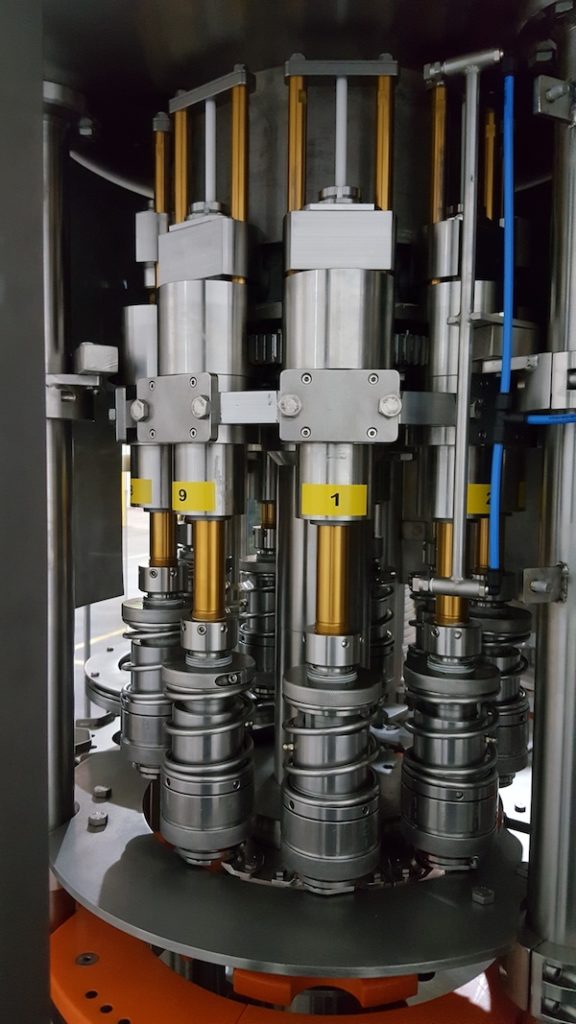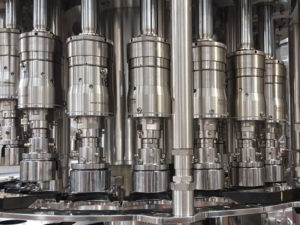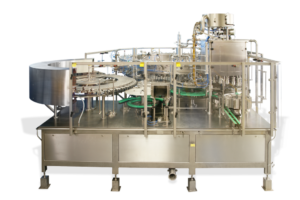BOTTLE CAPPING MACHINE: 2019 BUYERS GUIDE
The five key items when selecting the right bottle capping machine will be to define the closure, the package, the product, the filling temperature, and finally, the speed requirements in bottles per minute.

The closure type helps to determine the capper requirements. Is the closure serrated vs smooth sided, is it a flip top or a hinged closure? Is it a sport cap or extra tall closure, does it have a tamper band, is it a child resistant closure, is it multi-lead or single lead, what is the cap diameter? In today’s world, bottlers are also looking to remove weight/plastic at every opportunity to save cost which also plays a significant role.
Next, look at the container. Is the bottle glass, metal, or plastic? Does it require base handling or can it be transferred by the neck? What is the physical size of the package? How heavy is it, or more importantly, how light weight is the bottle?
The product, of course, also plays a key role in your decision. Is it hot fill or room temperature, is it volatile or corrosive?
The bottles per minute in conjunction with the cap type will determine the required number of capping heads.
BOTTLE CAPPING MACHINE CLOSURES
- Serrated closures that will allow a cap to slide freely in and out of the cap chuck means that a simple one-piece chuck can be used. The number and type of serration will affect the number of cap chuck changes.
- Smooth sided caps and hinged closures almost always require a gripper style chuck with jaws that open and close. Gripper style chucks will generally mean a second cam is required on the capper.
- Sport caps or tall caps will require a taller cam with a steeper drop at the cap pickup point. This drop must be considered in the max rotation speed of the machine.
- Single lead or multi-lead closures may require different spindle speeds or cam profiles. Spindle speed control can be provided in several different ways, but must be done upfront.
- Tamper bands, child resistant designs, and variations in cap diameter may require special top load or torque requirements for application.
- Cap shapes determine the type of cap sorter required. Cap sorters can be a significant cost factor and greatly affect machine efficiencies.
- What application torque does the cap supplier recommend on your closure?
- Learn about the different types of a capping machine.
CAPPING MACHINE CONTAINER CLOSURES
- Glass bottles are typically base handled. Care must be taken to ensure that the container is centered for cap application due to glass variation.
- Plastic bottles can be neck handled – typical for high speed beverage lines or base handled. Base handling is generally required for larger packages and bottles without a neck ring. Ultra-lightweight bottles require neck handling.
- Metal packages tend to be very consistent in their dimensions and come in standard shapes and sizes, but be careful to measure rectangular bottles across the diagonal.
- Container sizes determine the physical size of the machine required to handle the package and to meet the speeds.
PRODUCT TYPE
- Product type plays a big role in machine construction, guarding, and controls. This may require special materials for corrosion, special cleanliness standards for certain items such as HEPA filtration for pharmaceutical products, extended shelf life, or ventilation for operating in an XP rated environment.
PRODUCTION SPEED REQUIREMENTS
- Production speed ultimately determines the machine size and the number of capper heads. Determine the rated BPM from the equipment supplier for your bottle and cap. Spindle speeds typically run between 25 and 35 RPM.
- Integration to the filler and downstream machinery needs to be determined up front to understand the line layout and controls.
PICKING THE RIGHT BOTTLE ROTARY CAPPING MACHINE
Once all of the above factors have been considered, the key is to determine which machines meet all of your requirements. Remember: cost is important but must be weighed against all of your requirements. You will then need to take a look at the capper construction.
Is it rugged enough for your needs? Is it easy to maintain? How is the quality of service to support your operation? Are spare parts readily available? Will the machine meet your long-term growth needs? Are the latest controls available with operator interface and PLC? Can you get remote PLC support? How is the torque for your application provided and how accurate is it?
As the original distributor for Magnetic Technologies Ltd hysteresis capping heads, we strongly recommend their hysteresis heads for reducing wear and tear on your machine and getting a consistent and repeatable application.
AFTER THE INSTALL OF NEW CAPPING EQUIPMENT
Don’t forget the most important part is often after the install. Be sure the OEM provides the proper service set up and qualify the machine. This should include the SOP’s for your staff. This is where we JD Machinery Sales and Service can also help. Click on the attached link for a sample SOP. https://jdmachinery.net/wp-content/uploads/capper-set-up-sop.pdf
In short, you should be comfortable with who you are going to be working with. Are they knowledgeable, do they understand your industry, and can they answer your question in a concise manner? Sometimes, the best answer is “I’ll get back to you”. Remember: you are entering into a long-term relationship – a partnership that provides a winning situation for both parties.
Our goal at JD Machinery Sales and Service is to establish that partnership with our clients through our continued support from our reputable, key vendors. Reach out to us to ask how we can help you on your project or just to discuss your capping concerns.
Jim Smith
President
JD Machinery Sales and Service Inc.
803-322-4890



